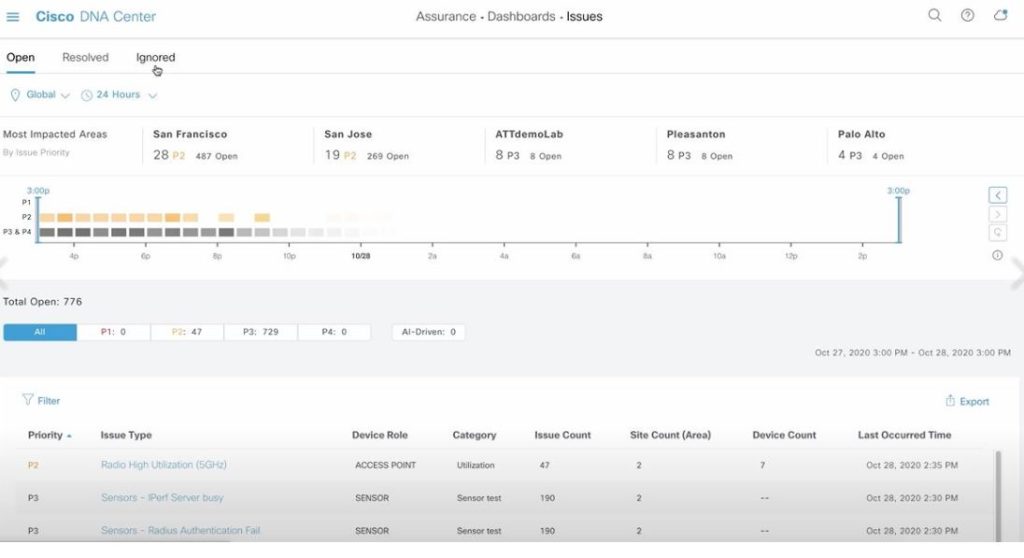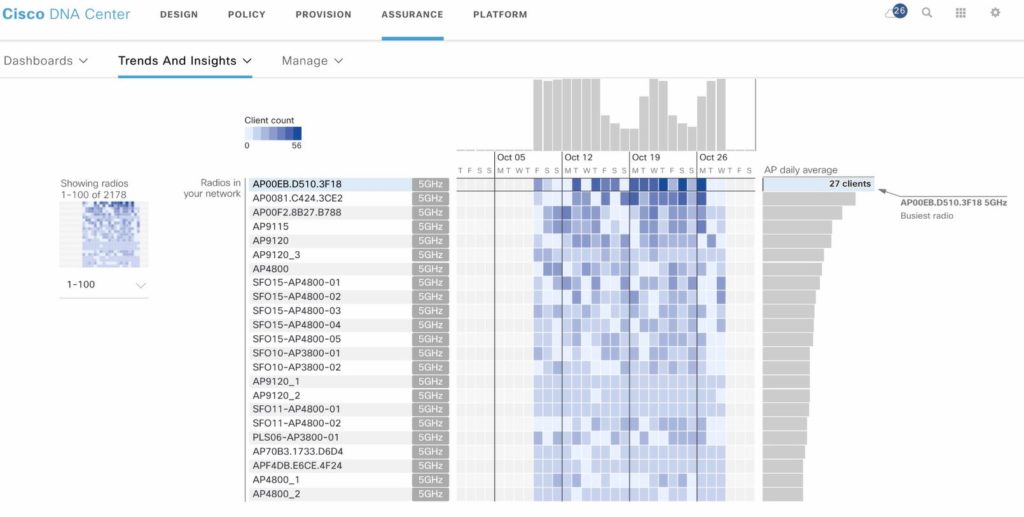
Cisco DNA Center Assurance is a game changer for troubleshooting problems in the network. It works by collecting large amounts of data from the network, processing this data, and presents the network administrator with detailed health information of network devices, clients and applications. Assurance also uses this same data to identify problems or issues in the network by leveraging pre-programmed rules—I always like to compare these to sophisticated signatures that can detect issues in the network when certain conditions are met.
More often than not, Assurance utilizes thresholds to figure out whether or not a specific state in the network is a problem or a normal occurrence. There’s a lot of flexibility in DNA Center which allows IT to customize these thresholds.
With AI/ML we can augment these capabilities. Machine learning is an application of artificial intelligence (AI) which can enable traffic to be analyzed over a period of time, looking for patterns which in turn allows for dynamic thresholds that adapt for different types of networks. With machine learning, we can augment the issues detected by Cisco DNA Center leveraging new AI-based issues known as dynamic thresholds.
The first phase of machine learning in DNA Center Assurance is used to solve the most common problems in a wireless network: wireless onboarding and wireless application experience.
Check out the video below to see a demo on issues generated by AI:
 So how does this work? DNA Center with AI/ML also has the ability to provide contextual network insights—meaning it analyzes trends in order to identify entities exhibiting a change of behavior. These insights are very useful, since they can potentially detect and prevent problems in the network before they occur. Let’s illustrate this with an example: if we start seeing an increase in the client count, that means that the AP is getting more load. This is an indication that users need more coverage and ultimately require more AP’s in a given location.
So how does this work? DNA Center with AI/ML also has the ability to provide contextual network insights—meaning it analyzes trends in order to identify entities exhibiting a change of behavior. These insights are very useful, since they can potentially detect and prevent problems in the network before they occur. Let’s illustrate this with an example: if we start seeing an increase in the client count, that means that the AP is getting more load. This is an indication that users need more coverage and ultimately require more AP’s in a given location.
Watch below to see a demo showing the trends and insights made possible by AI/ML:
 The Network Heatmap feature within Cisco DNA Center helps you to proactively explore areas of optimization by identifying the top AP’s that require the attention of network administrator. Using the Network Heatmap dashboard, allows you to then select a KPI you want to examine for a specific month. The “Top N AP” view will display a clear visual representation of interest across the network and daily trend from the past 30 days.
The Network Heatmap feature within Cisco DNA Center helps you to proactively explore areas of optimization by identifying the top AP’s that require the attention of network administrator. Using the Network Heatmap dashboard, allows you to then select a KPI you want to examine for a specific month. The “Top N AP” view will display a clear visual representation of interest across the network and daily trend from the past 30 days.
In the above video, we identified that the client count has been increasing over the past four weeks. Let’s now take a look at heatmaps for the “Client Count” KPI…
 Key Takeaways
Key Takeaways
- Machine learning has the ability to automatically learn and improve from experience by observing data and looking for patterns to make increasingly improved correlations, inferences and predictions.
- Machine learning can improve the visualization of problems in the network by leveraging AI-driven issues, heatmaps, trends and insights.
That being said, there is really no blog or virtual demo that can truly allow you to experience the benefits of AI Network Analytics – I would encourage you to turn it on and try it for yourself!
-Lila

Like this kind of content or want to learn more about Cisco DNA Center? Click here to read more of my technical blogs!

